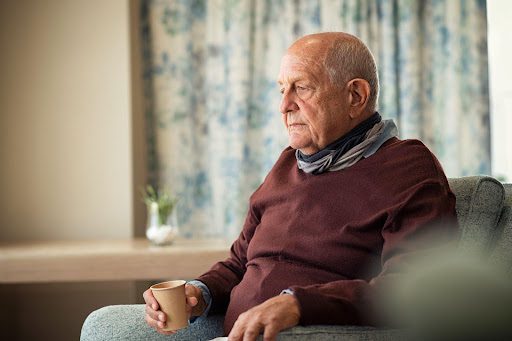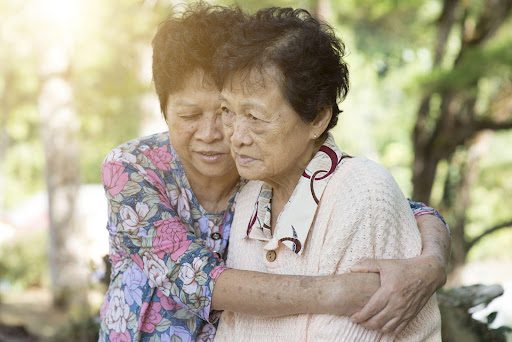Depression in older adults often presents itself through its own profile, appearing as separate and distinct from the disorder’s more common manifestations among younger populations. As such, in order to provide a more efficient response for depression in the elderly, treatment options need to account for unique and atypical forms of depression that tend to characterize this age group. Read on to find out more about depression among older adults, symptoms of depression in the elderly, and how to approach such cases.

Depression is a serious mood disorder, whose main characteristics are a consistently low mood, and a significant difficulty experiencing happiness (a symptom also known as anhedonia). Additional symptoms include feeling deep sadness, emptiness, or hopelessness, a critically low level of self-confidence, and difficulty concentrating.
According to the American Psychiatric Association (APA), approximately one in 15 adults (or 6.7% of the U.S. adult population) contends with depression. In the U.S. alone, 17.3 million adults (7.1%) are believed to have experienced one or more depressive episodes at some point during their lifetime.
Subthreshold depression is even more common than full-blown, major depression. In a study published by the Center for Disease Control (CDC) in 2019, 21% of adults ages 18-29 were found to experience depressive symptoms in the last two weeks—the most prevalent rate of depression among all adult age groups. That said, the same group of young adults was specifically found to have the highest percentage of mild depression. Together, these findings show that while young adults are likelier to develop depression, their level of depression is commonly less severe than among other age groups. Moderate depression was found to be most prevalent among adults aged 45 to 65 years.
Interestingly, severe depression rates were not found to vary much by age group. This means that the more concerning symptoms of depression, such as suicidal ideation and anergia (an extreme lack of energy that prevents the patient from leaving their bed), do not occur more frequently during a certain age group.
As stated above, depression among older adults can look quite distinct from the way depression appears in the general population, due to how it typically presents itself in younger patients.
One such difference is that in older adults, sadness is a less central aspect of this disorder. Instead elderly depression tends to feature a lack of interest in activities they used to enjoy, and a general feeling of numbness.
For many older adults, the reduced ability to function, which occurs as one grows older, can influence their overall sense of well-being. Mourning the loss of loved ones, financial concerns, and additional stress factors can additionally facilitate the development of depressive symptoms. While all of these factors may enter an individual’s life earlier, they are more likely to have experienced grief, limited physical abilities, or other types of loss, at an older age.
Older adults have been shown to have a higher chance of developing depression when facing the following risk factors:

Within the older adult population, symptoms of depression tend to appear in tandem with other health issues. This comorbidity can be especially distracting when it comes to physical symptoms of depression, which are often misunderstood as either symptoms of a physical ailment, or merely signs of old age.
Disturbed sleep, severe weight change, and a significant lack of energy are among the more common physical symptoms of depression. All of them can be chalked up to normative deterioration or lead the patient’s family physician to look at their blood work for a possible cause, while overlooking depression. The same can be said for headaches and physical pain, making the detection of older adult depression that much more difficult to detect.
Roughly 2.6% of the older adult population, or 6 million U.S. older adults, have been shown to face a depressive disorder. Further studies have highlighted that older adults aged 65 and over are typically less likely to develop full-blown depression.
These findings, however, come with a serious caveat: While less older adults seem to develop major depression, those who do are far more likely to be at serious risk, particularly from suicidality. In fact, the suicide rate of patients aged 80-84 is twice as high as that of the general population.
A further concern is the low rate of treatment among patients in this population. Specifically, despite a growing awareness of mental health issues that occur later in life, only an estimated 10% of older adults facing depression are thought to receive treatment.
Depression can have concrete effects on older adults’ lifespan. Specifically, the APA has found that older adults facing both loneliness and depression are likely to die at a younger age than older adults who report greater life satisfaction.
Battling depression can be challenging at any age. For many older adults facing this condition, treating their depression means not only recognizing its easily overlooked symptomatology, but also overcoming the traditional stigma attached to mental healthcare.
That said, elderly mental healthcare has progressed in recent decades, with certain forms of therapy found to be relatively particularly effective in treating depression among older adults. The American Psychological Association (also shortened to APA) recommends that elderly patients battling depression speak to their primary care physician about the following treatments:
Several types of psychopharmacological treatments have been found to be effective in treating depression among older adults:
The APA also highlights the benefits of a number of psychotherapy treatments, when elderly patients facing this condition: